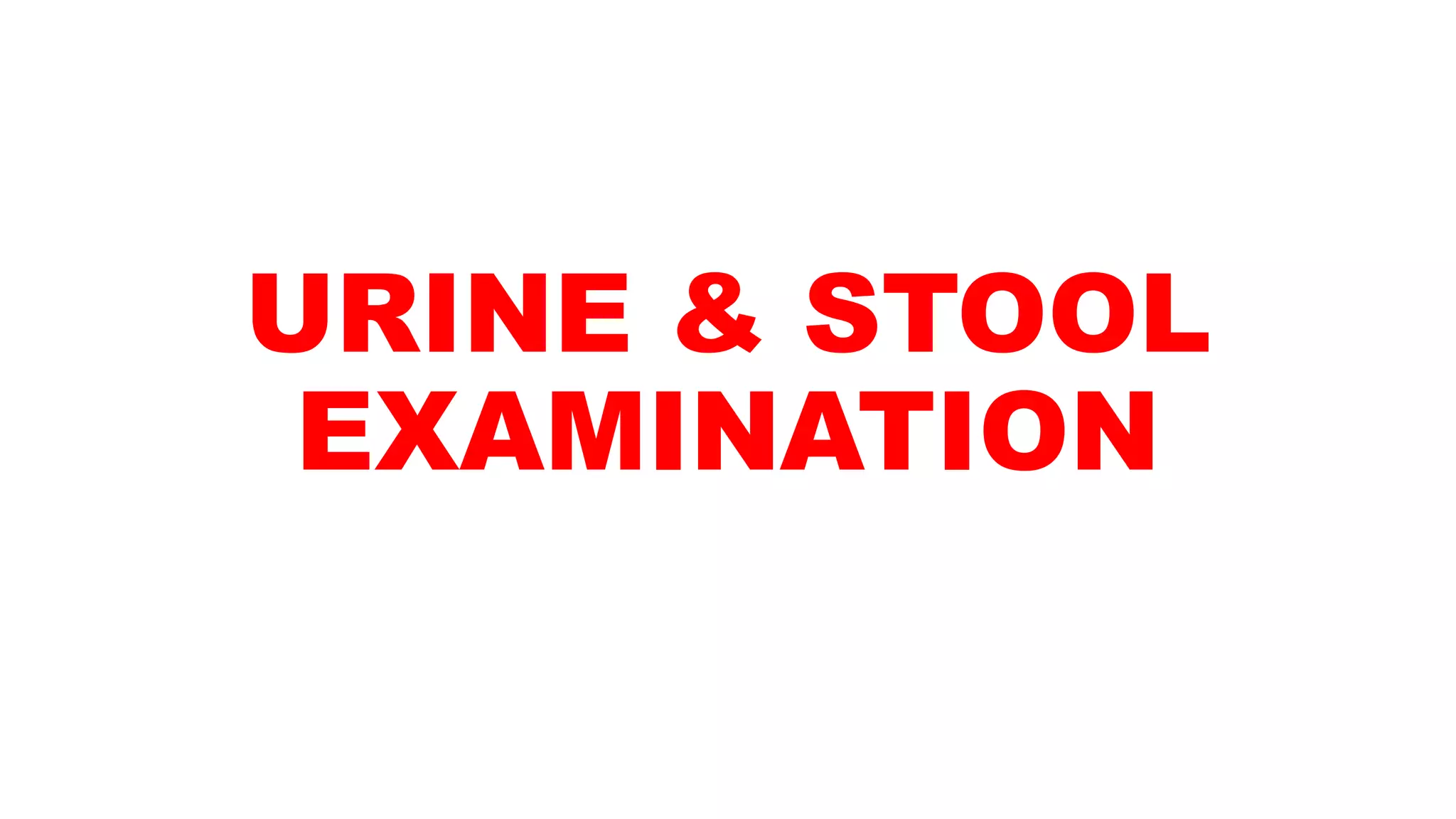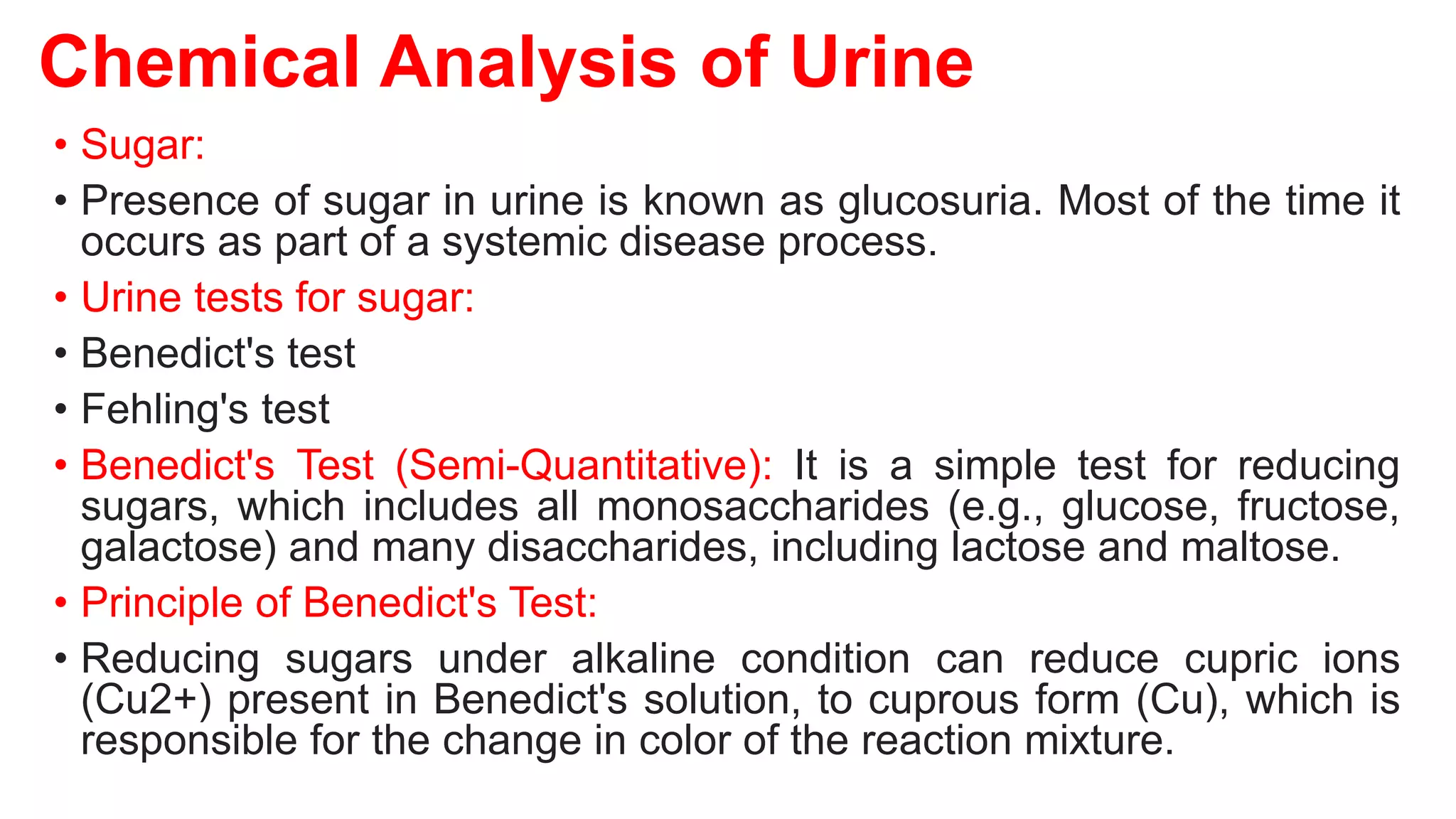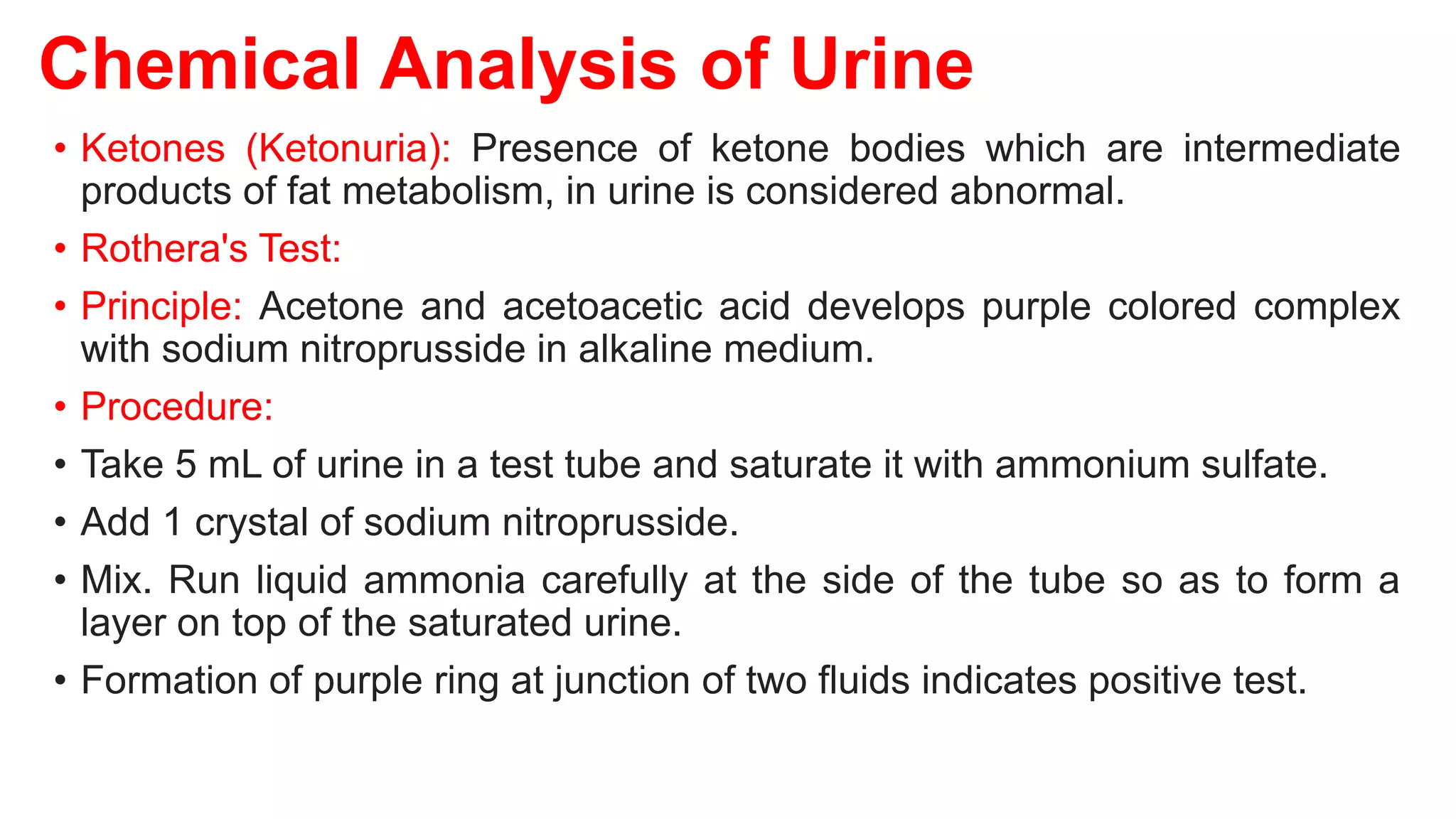The document provides information on urine and stool examination procedures. Urine analysis includes physical, microscopic, and chemical tests to evaluate health and diagnose kidney, urinary tract, and other diseases. Stool examination includes physical, microscopic, and chemical analysis to diagnose gastrointestinal conditions like diarrhea and detect parasites. Both exams provide valuable information for disease diagnosis and monitoring patient health.







































